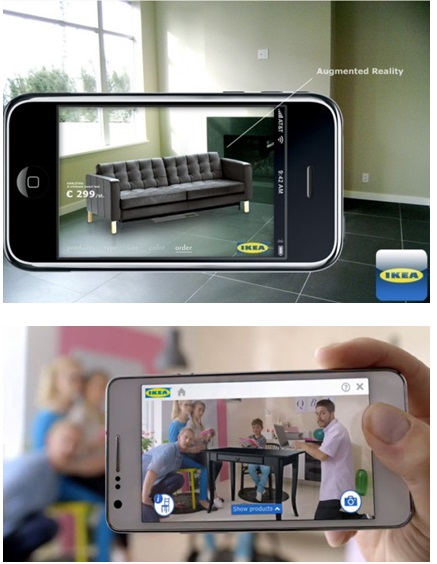The 2014 IKEA catalogue came to life this year taking the customer experience further with extended digital content. This case study looks at how the furniture brand used augmented reality technology to add a new dimension to the shopping experience, getting a huge 8.5 million downloads in the process.
To unlock 50 pages of digital content, including videos, furnishing tips and room designs, users needed to download the IKEA catalogue app, scan the plus logo in the catalogue with their smartphone or tablet and have access to a variety of digital content. One of the features was an augmented reality capability which allows customers to view and place selected 3D virtual IKEA products in their own rooms.

What’s the viewer’s experience?
The app provides a unique experience allowing users to experience new furniture to scale in their room. Going to an IKEA store may be difficult for many customers so giving them the ability to see virtual images of products will help customers to make purchase decisions and buy online.
The service works by users scanning selected pages in the 2014 printed IKEA catalogue with the IKEA catalogue app (available for iOS and Android) or by browsing the pages in the digital 2014 IKEA catalogue on a smartphone or tablet.
After selecting a piece of furniture, users put the catalogue itself on the ground, where it acts as a sort of anchor for the 3-D image of the chair or table. If the furniture needs to be rotated, the user simply rotates the catalogue.
Marketers should look at every brand touchpoint as an opportunity to engage digitally, and this app is a perfect example of a brand adding entirely new value to an old medium with digital technology.
Results
According to company reports, the app was downloaded 8.5 million times. The aim of the new app is to improve the selection and purchasing process.
Speaking to the trade journal Mobile Commerce Daily, Marty Marston, Product Public Relations Manager at IKEA US, said: “Some people are afraid that they’re going to make the wrong colour choice or the style might not look good with the other styles that they’re trying to mix and match it with or just not look good in that space, so they may not buy it, and that’s unfortunate because maybe it’s exactly what they need. So we think that this augmented reality feature may be a solution for some people to really help them with that buying decision in the process.”